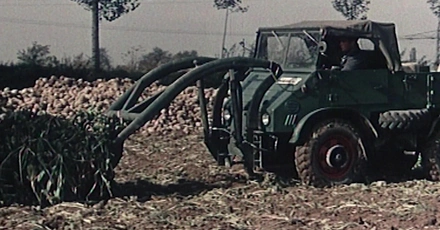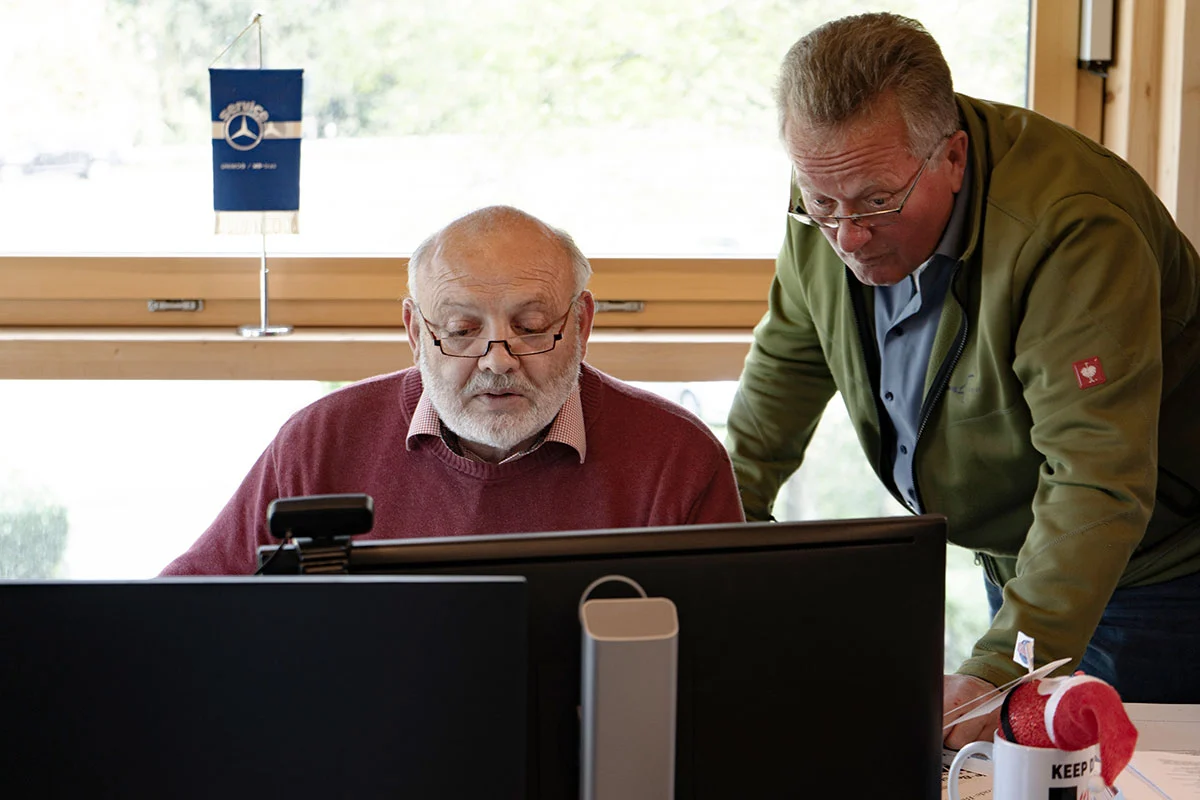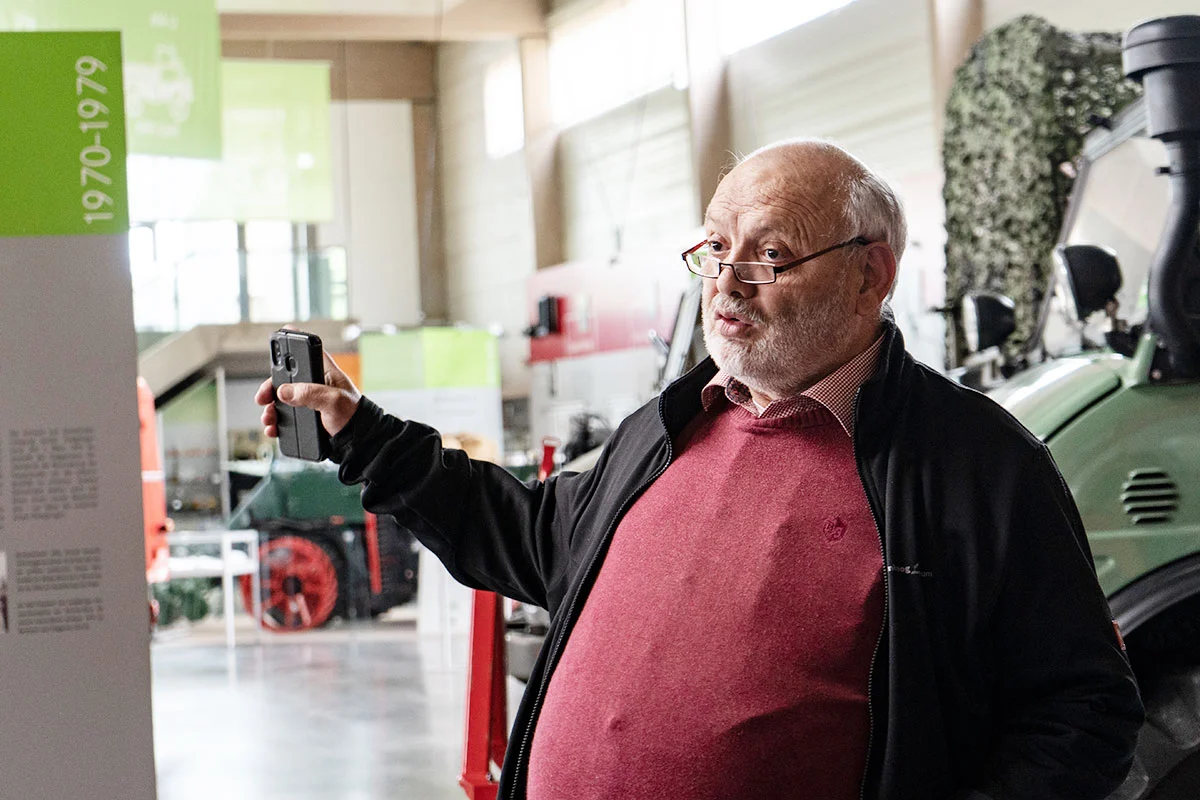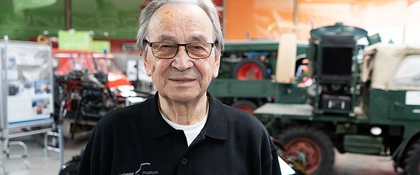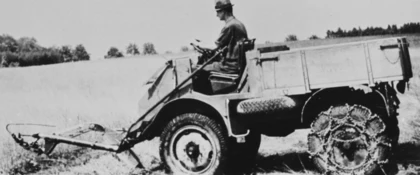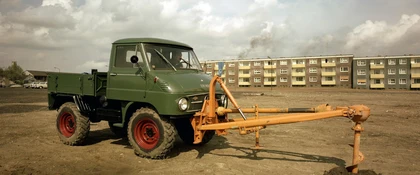It Paul Schneider’s friend, Karl-Josef Leib, who had the idea of bringing Paul on-board at the former model series advice team. "From 2015, the Unimog Museum in Gaggenau took over the Unimog customer service for former model series at the Wörth plant," explains Paul Schneider. "We assist the Unimog service organisation, independent workshops and, of course, private customers all over the world." Leib and Schneider’s four-strong team help with questions concerning repairs, as well as with locating appropriate documentation and data cards. Plus, they also aid with sourcing bodies and replacement parts.
Great know-how and years of experience.
Today is no exception to the rule – the phone just does not stop ringing. "If someone calls us and wants a paint code for the original paint finish of a specific model from the 1950s, we can find that for them," explains Karl-Josef Leib who has since led us across the corridor to another room. Here, the two pros have built up a technology archive over the years. Documents written on typewriters and prices in Deutschmarks, certificates and photos, specialist books and construction plans: it’s somewhat of a secret museum just a stone’s throw from the actual Unimog Museum. And it’s in use every day for research purposes. Karl-Josef Leib knows all of the drawers, cupboards and shelves of the archive like the back of his hand. But despite that, the vast majority of knowledge which he and Paul Schneider have is in their own heads.
The Unimog as your daily bread.
And it should come as no surprise really, especially when you add up all of the years the pair worked at Daimler, and the innumerable amount of hours of their free time which they have both devoted to the Unimog. Both Unimog enthusiasts caught Unimog fever as young men. Paul Schneider learned the trade from the ground up. First he trained as a vehicle mechanic, then he decided to move to Hamburg where he studied commercial vehicle manufacturing and bodybuilding.
"In 1981, I started working at Daimler in the customer service documentation department, and that’s where I first wrote technical documents." He then held a number of different positions, including working in spare parts, managing warranty training courses, and even working in nationwide customer service. Thereafter, Paul Schneider became an export representative in countries like Portugal, Austria and Greece. "That was a really nice time. There were no mobile phones and so when you were away, you’d literally hear nothing from the office for weeks," recalls Paul Schneider. Later, he became head of the national sales team in Germany. In his final few years in the job, he was responsible for the Unimog for the German army.
The Unimog starts where others have to stop.
Karl-Josef Leib, head of the former model series advice team at the Unimog Museum in Gaggenau
"It meant I was able to gather quite a broad spectrum of knowledge," adds Paul Schneider humbly in response to our amazement at his career with the versatile all-rounder. "That said, if someone calls who has dismantled a transmission and wants to know which way round a specific screw needs to go, I’d have to say ‘Sorry, I need to get the book and check for myself’," says Paul Schneider.
Already knowing where to find this type of information is a decisive point. And if needs be, he even heads across the way to the museum and gets under one of the historical vehicles himself to take check. "For example, a customer once needed to know how to fit a Binger winch to the Unimog – that’s a piece of equipment designed specifically for use in steep vineyards. We have no documents for that. But in the museum, we actually have a Unimog with a Binger winch fitted. So I just took some photos so that the customer could see how it was installed
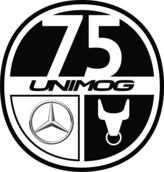
This year the Unimog celebrates a special birthday.
We look back on 75 years of universal motorised equipment. And look forward to the future.
75 years of Unimog. Power for a purpose.
Visit the anniversary page
Always there where you need it.
A worthwhile operation. "The nice thing about working with the older model series is that only really deal with customers who are one hundred percent happy with their Unimog, who enjoy using it and who have a real passion for the vehicle, and they want to keep it in good shape," says Karl-Josef Leib explaining what it is that motivates him. And best of all, he’s also a member of the team’s target audience, as an owner of four of the all-rounders himself. "I leave my car outside, but the Unimog trucks are all dry and warm in the garage!"
In 2005, he met Paul Schneider in the regional management department and in 2013 came his re-orientation. "After 40 years of service, I decided I wanted to do something completely different again." Karl-Josef Leib became head of technology at the Unimog Museum, where he helped set up the workshop. "I spent more and more of my time dealing with the numerous technical questions than actually working in the museum," the expert tells us.
"The number of queries didn’t diminish and so the Wörth plant decided that the Unimog Museum needed its own department for technical advice." And that’s how the former model series advice team saw the light of day. "And I was lucky that my friend Paul was struggling to figure out what to do with his time," recalls Karl-Josef Leib, laughing. "Service staff are a really special breed of people," he explains. "You have to be able to work in difficult situations – and it’s in times like these that the service team grows closer together. That really facilitates things – you just call your old friends and you’ve already put together a great technical advice team."
Not just Unimog fans but also true professionals.
For Unimog fans like Paul Schneider and Karl-Josef Leib, the annual Unimog meetings are real highlights. And that’s despite them often being there for work reasons. "Some people know us and so we often get asked for advice." But that doesn’t normally bother the pair. "That’s also a type of service which a regular service department can’t afford to propose." Plus: "Every Unimog which turns up at such meetings has often already enjoyed several different lives. The former model series advice team makes an important contribution to bringing old Unimog vehicles back to life," Paul Schneider says, explaining the core aspect of his work. He’s barely finished his sentence and the phone is already ringing again. He picks it up – there are some new questions to be answered. But he and Karl-Josef Leib have the answers.


